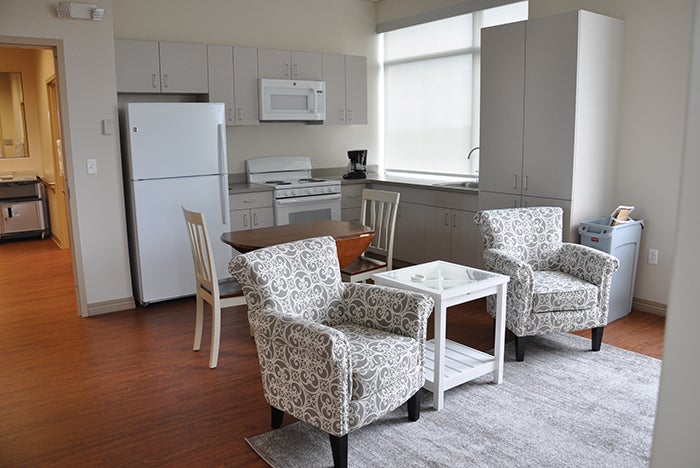Sim center designed for care continuum

A mock apartment allows clinicians to practice administering care in patients’ homes.
Image courtesy of SSM Health
As health care breaks out of its traditional four walls and into off-site facilities, community-based clinics, medical office buildings and even patients’ homes, SSM Health wanted to ensure that its newest simulation center would reflect the same progression.
The nonprofit Catholic health care system opened the 27,500-square-foot SSM Health Lab and Simulation Center in Fenton, Mo., in June. It is located in a two-floor facility that also houses a medical group, lab and imaging center.
The simulation space includes all of the features typically associated with this type of facility, including six simulation rooms that replicate SSM Health patient rooms, six integrated training classrooms that double as meeting space, three computer training suites and a large conference room. One of the features that sets it apart from peers, however, is its focus on servicing patients along the continuum of care.
“We planned for home to hospital to doctor’s office to home care, and all of the pieces needed for each,” says Amber Wood, system director of clinical education. “It’s all a part of providing high-quality care. Of course, there is acute care space, but we also have space where we’ve put a multi-room apartment to focus on the needs of our patients at home. Staff can get familiar with working in a home setting, and we can walk through situations there. It even has a bathroom, living room and kitchen set up.”
The level of detail doesn’t just stop at direct patient care, however. For instance, the “at-home” training includes robotic cockroaches that appear in the apartment, alerting clinicians to pay attention to the cleanliness of their patients’ houses since an unclean environment can pose a health risk.
The simulation center also includes a mock medical office, two simulation debriefing rooms and storage space for equipment.
SSM Health is working to build up the training programming that will be housed in this new center. The system’s transportation team was the first to begin training as new hires simulate air flights for critical pediatric and neonatal patients.
More teams will be added as the health system’s multidisciplinary steering team finalizes curriculum.




